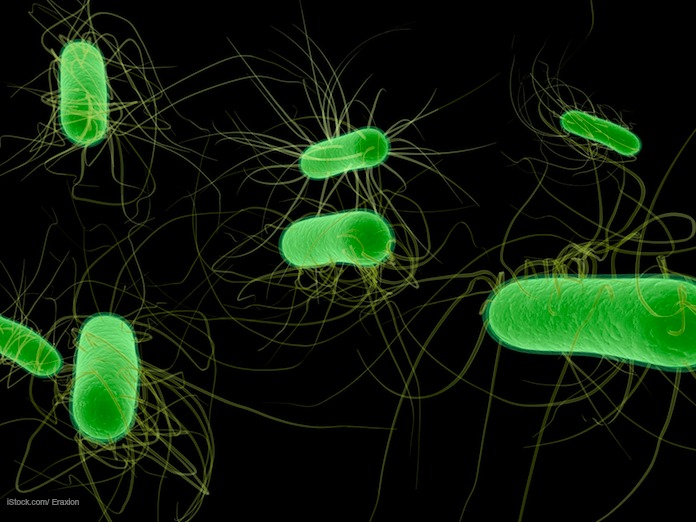An E. coli O121 outbreak linked to Robin Hood flour in Canada has sickened at least 25 people, according to the Public Health Agency of Canada. All patients identified in this outbreak have samples with E. coli bacteria that match genetically. This outbreak is reminiscent of the 2016 E. coli outbreak in the United States linked to General Mills flour. And it’s another reminder that flour is a raw agricultural product, can be contaminated with pathogenic bacteria, and should never be eaten raw.

The flour has been recalled. The product is Robin Hood All Purpose Flour, Original in 10 kilogram bags with a code of BB/MA 2018 AL 17 and 6 291 548. It was distributed in British Columbia, Alberta, Saskatchewan, and Manitoba. Secondary recalls of products made with this flour may be announced as the investigation continues.
The outbreak case count by province is: British Columbia (12), Saskatchewan (4), Alberta (4) and Newfoundland and Labrador (5). Illness onset dates range from November 2016 to late February 2017. Six individuals have been hospitalized. These individuals have recovered or are recovering. No deaths have been reported. The majority (54%) of the individuals who became ill are male with an average age of 24 years. There is no mention of whether or not anyone in this outbreak has developed hemolytic uremic syndrome, a complication of an E. coli infection.
During the food safety investigation, samples of Robin Hood flour were collected and did test positive for E.coli O121. Several individuals who became ill reported having contact with Robin Hood flour.
Check to see if you have this recalled product in your home. If you do, throw it away in a sealed or double bagged package in a secure garbage can. If you decant the flour you buy into another container and aren’t sure if it is the recalled product, throw that out, even if you used it and no one got sick. Wash that container with soap and water before reusing it.
When you cook and bake, do not taste raw dough or batter. DOn’t use flour to make a non-baked product such as children’s play-dough. And wash all surfaces or containers that may have come into contact with the flour with soap and water. Then wash your hands with soap and water.
The E. coli outbreak linked to recalled General Mills flour in the United States last year sickened 63 people in 24 states. Seventeen people were hospitalized. The median age in that outbreak was low, at 18, mostly because teenagers and children are more likely to eat raw dough and play with products made with raw dough.
The symptoms of an E. coli infection include severe stomach and abdominal cramps, watery and/or bloody diarrhea, vomiting, nausea, and a headache. If there is a fever, it is usually very mild. Some people infected with E. coli bacteria can develop hemolytic uremic syndrome (HUS), which can destroy the kidneys. The symptoms of HUS include little or no urine output, lethargy, paleness, easy bruising, a skin rash, and bleeding from the nose or mouth. Anyone experiencing these symptoms should be taken to a doctor immediately.




